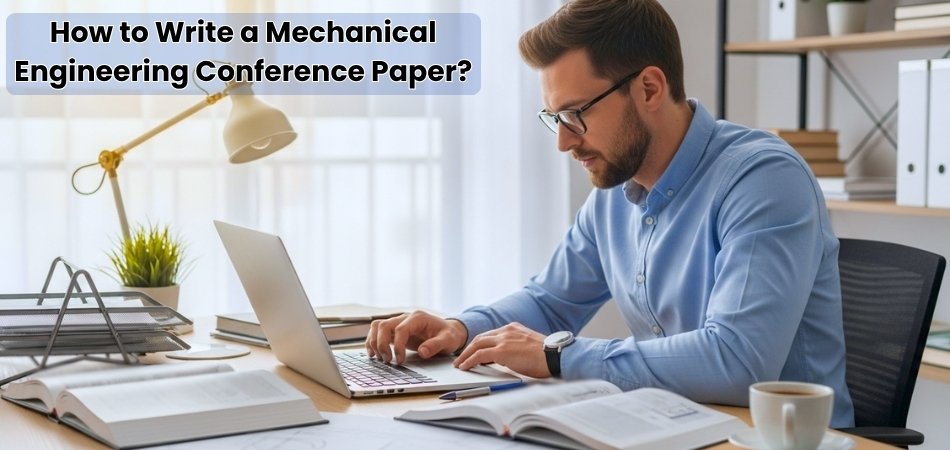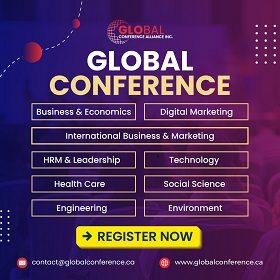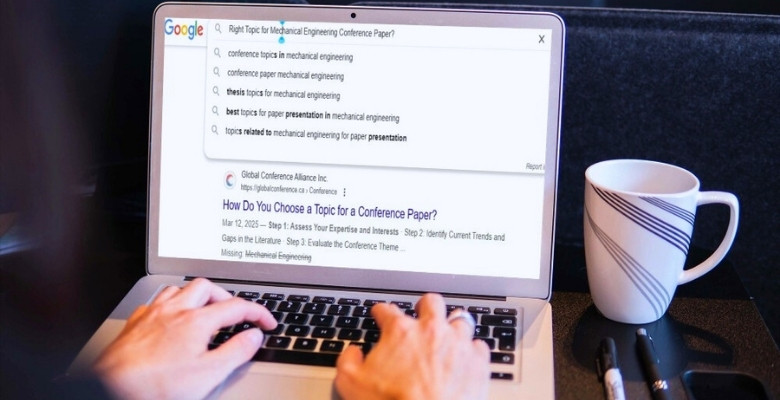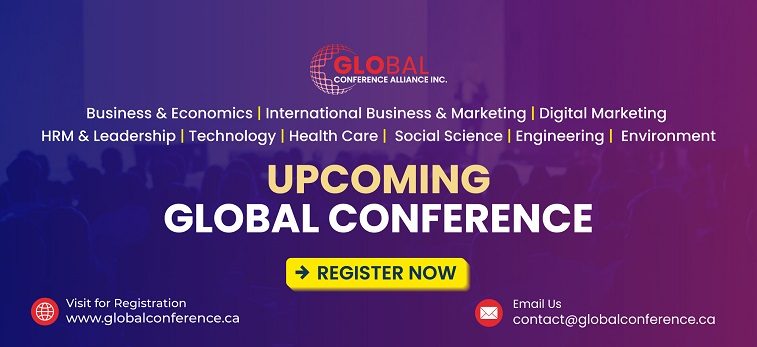Mechanical engineering conferences are a great way to share useful ideas and real project work these days. One key part of these events is the conference paper, which explains your work in a simple and clear format. Now, newcomers who wish to plan this event can ask, How to write a mechanical engineering conference paper.
To write a mechanical engineering conference paper, follow a clear structure. Start with a short abstract that gives the main idea. Then, add an introduction, describe your method, show your results, and explain what they mean. Finish with a conclusion and a list of sources. Always follow the rules given by the conference.
If you’re planning to write a paper and want to do it step by step, this article has you covered. You’ll find all the important parts explained in the right order. Keep reading to learn everything you need for writing your own paper.
How to Write a Mechanical Engineering Conference Paper?
Writing a paper for a mechanical engineering conference might feel like a big challenge, but it becomes much easier when you follow simple steps. Most papers follow a basic structure. If you stick to that, you’re already halfway there. Let’s go through each part and learn how to do it the right way.

Know the Topic
Each conference focuses on a specific subject or theme. Before you start writing, take time to understand what the conference is mainly about. This helps you stay focused and choose the right direction for your paper. If you’re aiming for international events like conferences in USA, Canada, or other countries, it’s even more important to read their rules carefully. That way, you’ll know exactly what they expect.
Write a Short Abstract
The abstract is a short summary of your paper. It should briefly explain the problem you looked at, how you tried to solve it, what results you found, and what those results mean. Think of it like a snapshot of your whole work. Keep it between 150 and 250 words. Skip the long background stories—just stick to the main points.
Simple Introduction
Begin by clearly stating the problem you worked on and why it’s important. Give just enough background so the reader understands what you’re talking about. You can also mention what others have done about this problem before. Then, point out what makes your work new or useful. This section helps the reader get ready for what’s coming next.
Explain the Method
Explain how you did your work step by step in this part. Talk about the tools, machines, or software you used and what process you followed. Make it simple, like giving instructions to someone who wants to do the same thing. Don’t make it too long, but add enough detail to show that your work was done carefully. Anyone reading it should be able to follow your steps.
Share the Results
After explaining your method, show what happened. Use charts, graphs, or tables to make things clear—but talk about them before showing them. This helps readers know what they are looking at. Focus on the key points, not every little number. Keep this part neat and easy to read.
Explain the Meaning
Now it’s time to talk about what the results really mean. Did things turn out the way you expected? Was there anything different or surprising? Say what worked well and what didn’t. If you had any issues, explain how they affected the results. This part helps others understand if your method was useful or not.
Strong Conclusion
Wrap things up by quickly going over your most important findings. Talk about what others can learn from your work or what they could try next. Don’t just repeat everything from before—summarize the key parts. End your paper in a clear and confident way. A strong finish leaves a lasting impression.
List Your Sources
This is where you show all the materials you used, like books, websites, or other papers. Make sure to write them in the right format, such as IEEE or APA, depending on what the conference asks for. Always give credit to where you got the information from. This shows you’ve done proper research and respect other people’s work.
Final Check
Before you send your paper, read it out loud. This helps you catch mistakes or sentences that don’t sound right. Fix anything that’s confusing. Also, double-check the paper size, font, and spacing rules given by the conference. Small things like these can make a big difference. A final check makes your paper cleaner and more professional.
What to Include in a Mechanical Engineering Conference Paper?
Mechanical engineering conference papers have certain key pieces that make them strong and easy to follow. Knowing what to include helps your work stand out and keeps everything organized. If you want your paper to be clear and useful, there are some important parts to focus on.
Clear Problem Statement
Every paper should begin with a clear problem you are trying to solve. This helps the reader know exactly what the focus is. The problem should be real, not made up, and related to mechanical engineering. Keep it simple so anyone reading can understand it quickly. A good problem sets the direction for the rest of your work.
Why It Matters
Once the problem is clear, explain why it’s important. Tell how solving it could help in real life. You don’t have to go too deep—just make sure the reader knows the topic is useful. You can also mention who might benefit from it. This gives your paper more meaning and purpose.
Main Idea or Goal
Every paper should have one main goal. It’s what you want to achieve by the end of the work. Keep the goal focused, not too wide. Make sure the rest of the paper connects back to this goal. A clear goal keeps your paper on track.
Key Observations
If you noticed anything interesting while doing your work, share it here. This could be something that didn’t go as planned or something that worked better than expected. These points make your paper more real and more personal. Just be honest and explain what you saw. It helps others learn from your experience.
Useful Suggestions
You can also add tips or advice based on what you found. Maybe there’s something others should avoid or try if they’re working on the same topic. Don’t worry about sounding like an expert—just share what you think can help. These small ideas can make a big difference for future readers. Keep them short and clear.
End Summary
Give a short wrap-up of your most important points at the end. Don’t repeat the whole paper, just the main things that matter. It helps readers remember what your work was really about. Try to keep it to a few sentences. A strong ending leaves a good final impression.
Tools That Can Help You Write a Better Mechanical Engineering Conference Paper
Writing a great mechanical engineering conference paper becomes easier when you use the right tools. These tools help you stay organized, write clearly, and avoid small mistakes. Here are some useful ones that can support your work from start to finish:
| Tool Name | What It Does | Why It Helps |
| Google Docs | A cloud-based writing platform | You can access your work anywhere and easily share it with others |
| Grammarly | Checks grammar, spelling, and clarity | Helps you avoid writing mistakes and keeps your text clean |
| Mendeley | Manages references and citations | Saves time and keeps your sources in the correct format |
| Canva | Makes simple charts and visuals | Great for creating clean and easy-to-read images for your paper |
| MS Word | A well-known word processor | Offers many writing features and works offline |
| Google Scholar | Helps you find trusted papers and articles | Useful for research and getting background info |
| Hemingway Editor | Checks sentence length and readability | Makes your writing simple and clear |
| Trello | A task management board | Helps you plan steps and keep track of your writing progress |
These tools are easy to use and make a big difference when writing your paper. Some help with writing, some help with research, and others keep you organized. Using even a few of them can make your paper better and easier to complete.
How to Choose the Right Topic for Your Mechanical Engineering Conference Paper?
Picking the right topic can feel confusing at first, especially when there are so many ideas out there. But with a little thinking and planning, it becomes much easier. A good topic keeps your paper clear and interesting. Let’s look at the best ways to choose the right one.
Think About Interests
Start by thinking about what you like. If you enjoy machines, engines, or how things work, try picking something in that area. Writing about a topic you care about makes it easier to stay focused. You’ll also understand the topic better because it already makes sense to you. Try not to copy someone else’s idea just to sound smart. Pick something that feels right to you.
Check What’s Useful
A good topic is often one that solves a problem or improves something. Look around your home, school, or neighborhood to find real issues with machines or tools. If your topic can help people in some way, it’s already a strong idea. People like reading papers that have meaning in the real world. It also shows that you thought deeply about your topic. Useful topics are always interesting to write and read.
Keep It Simple
Simple topics are easier to understand and explain. Don’t try to pick a topic that is too big or hard to handle. If an idea seems too wide, break it down into a smaller part. Simple doesn’t mean boring—it means clear. A clear topic helps you write better and helps others understand you. You don’t need fancy words or complex ideas to make a good paper.
See What’s New
Sometimes picking something new can make your paper stand out. You can find fresh ideas by reading science news, watching videos, or checking websites. New problems or inventions in the world of machines can give you good ideas. But be sure it’s something you can explain well. If the topic is too advanced or too new, it might be hard to write about. Pick something current but still easy to research and understand.
Match the Theme
Every conference usually has a main topic or theme. You should choose a topic that fits that theme well. If your topic doesn’t match, your paper might not be accepted. Always check the rules or theme of the conference before choosing. This helps you stay on track and keeps your paper in the right area. Matching the theme shows that you followed the instructions carefully.
Do a Quick Search
Before you start writing, search online to see if your topic has enough information. If there are already many papers on the same idea, try changing your angle or focus. If you find nothing at all, the topic might be too rare or hard to study. Make sure there are books, websites, or papers that can help you. This makes writing easier because you won’t get stuck. A quick search can save you a lot of time later.
Check Time and Tools
It’s important to think about the time you have and the things you need. Some topics may need machines, tools, or tests that are hard to do. Pick something that you can work on without too much trouble. Make sure you have the things you need before you choose. You don’t want to run out of time or get stuck later. A good topic should fit your time and your tools.
Ask for Feedback
Before you start writing, talk to someone about your idea. It could be a friend, teacher, or anyone who knows about the topic. They might see something you missed or give you a better way to say it. Feedback helps make your topic stronger. You don’t have to take every suggestion, but it helps to listen. A quick chat can give you new ideas and clear up confusion.
Choosing a topic is a smart first step in writing a good paper. It’s better to take your time and think it through instead of rushing. When it comes to finding a strong conference paper topic for mechanical engineering, the right choice makes everything else easier—from writing to presenting. So use these tips and choose a topic you’ll enjoy working on.
Should You Include Equations, Diagrams, or Simulations in Your Conference Paper?
Yes, you should include equations, diagrams, or simulations if they help explain your topic better and make your paper more clear. Many times, a simple diagram can show something faster than long sentences full of text. Simulations can also show how your design works in a real-life case or condition. Equations are helpful when you need to prove a point or explain how you got your results.
But it’s important not to add too many things that confuse the reader or make the paper look too full. Every diagram or chart should be neat, labeled, and explained in simple words under it. If you include a simulation, write a few lines telling what it shows and why it matters. Readers don’t need to see everything—just the parts that make your idea easy to understand.
Use equations only when you truly need to show a method or explain how something was calculated in your project or test. If the paper can be understood without one, then it’s okay to leave it out. Keep every figure, chart, and step clear so that anyone can follow it without any special knowledge. Simple papers with helpful tools are easier to read, remember, and share.
What Citation Style Is Typically Used in Mechanical Engineering Conference Papers?
Mechanical engineering conference papers must include proper credit for all sources used. Different conferences may ask for different styles. Learning the right way to cite helps keep your paper clean and trusted. Here are the most common styles and how to use them right.
IEEE Style Basics
IEEE is one of the most used styles in engineering papers. In this style, each source gets a number in square brackets like [1]. You place this number in the text where you use the information. Later, in the reference list, you match each number with full details of the source. This style is simple and helps keep the paper neat.
ASME Style Use
ASME is also used in many mechanical papers, especially for ASME-related conferences. This style uses numbers too, just like IEEE. The difference is mostly in how the full source is written in the list. You’ll see things like author names, year, title, and journal name in a set format. ASME style helps keep everything organized and easy to find.
Where to Add Citations
Place a citation right after the sentence or idea that comes from another source. Don’t wait until the end of the paragraph. Use a number like [2] right after the fact or quote. This tells the reader where the information came from. Always match the number with the correct item in the reference list.
How to Format References
In the reference list at the end of your paper, write out full details for every source. This includes the author’s name, title of the work, year, and where it was published. Follow the correct order and style rules for IEEE or ASME. Make sure all items are clear and complete. One small mistake can confuse the reader.
Citing Websites Properly
If you use websites, you need to add the page title, full link, and the date you visited the site. Some styles also ask for the author, if listed. Don’t just copy and paste a random link. Always double-check the format for websites. Keeping it clean shows your work is careful and honest.
Tools That Can Help
You don’t have to do it all by hand. Tools like Mendeley, Zotero, and Google Docs can help with formatting. Just enter the details and choose the style you need. The tool will build your reference list for you. Still, it’s good to check the final version before submitting.
What Common Mistakes Should Be Avoided in a Mechanical Engineering Conference Paper?
Even a well-planned paper can lose its value if certain mistakes are not avoided. Some issues may seem small but affect the whole paper. Knowing what to watch out for makes your work stronger and easier to follow.
- Weak Literature Review: Not reviewing enough past work makes the paper feel incomplete and shallow. A strong review shows you understand the topic well.
- Overuse of Jargon: Using too many hard words can confuse people who read your paper. Simple words make your ideas clearer and easier to grasp.
- Unclear Visuals: Diagrams or graphs without labels or clear notes don’t help readers understand. Every visual should be easy to read and explain.
- Missing Main Focus: Jumping between too many ideas can make the paper feel messy. Stick to one strong topic and build your points around it.
- Not Enough Analysis: Just sharing results without explaining them weakens your paper. Always tell what your findings mean and why they matter.
- No Real Conclusion: Ending a paper without wrapping up your key ideas leaves readers confused. A short, clear summary helps finish your paper right.
- Skipping Proofreading: Sending a paper without checking for mistakes can hurt your work. Small spelling and grammar issues change how readers view your effort.
- Wrong Citation Style: Using the wrong format or missing sources shows poor attention to detail. Always check what style the conference has asked for.
Things to Do After Your Mechanical Engineering Conference Paper Is Accepted
Getting your paper accepted is a big step and something to be proud of. But your work isn’t done just yet. There are a few more things you should take care of before the conference. Let’s look at what comes next after the good news.
Check the Final Format
Once your paper is accepted, check if it needs to be in a certain format. Some conferences ask for changes before printing or sharing. Follow their rules about font, size, or layout. Fix anything they mention in their review. A clean and correct format makes your paper look more professional.
Prepare Your Slides
You’ll likely have to present your paper, so start making your slides early. Keep them simple and don’t add too much text. Use pictures or charts to explain your points better. Each slide should help you talk, not replace your words. A clear presentation helps others understand your work easily.
Practice Your Talk
Don’t wait until the last minute to practice your talk. Go through your slides a few times and speak clearly and slowly. You can practice in front of a friend or by yourself in front of a mirror. Time yourself to make sure you don’t go over the limit. The more you practice, the more confident you’ll feel.
Register for the Event
Most conferences need you to sign up before a deadline. If you miss it, your paper might not be included. Read the instructions and complete your registration on time. Some may ask for a fee, so check the details carefully. Always keep a copy of your confirmation.
Gather All the Essentials
Before you go to the conference, collect everything you need in one place. This can include your ID, confirmation letter, USB drive, notebook, and pens. If the event is in another country, like the U.S., check the essentials for a U.S. mechanical engineering conference, like travel documents and any special rules. Pack your poster or handouts safely. Check your bag the night before. Being ready helps you stay calm and relaxed.
Arrange Your Travel
If the conference is in another city or country, start planning your trip. Book your travel and stay early to avoid last-minute problems. Keep the dates and location saved somewhere easy to find. Make sure you know how to get to the venue. Planning ahead saves time and stress later.
Print What You Need
Some conferences ask you to bring printed papers, ID cards, or poster boards. Check the list of items they mention. Prepare everything at least a few days before the event. Put it all in one folder or bag. That way, you won’t forget anything important.
Stay Ready to Answer
After your presentation, people might ask questions. Don’t worry—just answer them honestly and clearly. If you don’t know something, it’s okay to say so. Be polite and listen carefully. Answering well leaves a good impression.
Commonly Asked Questions
Every writer faces new questions when working on their first mechanical engineering conference paper. Below, you’ll find answers to many common concerns that can come up during the process.
How Do I Submit My Conference Paper Online?
Most conferences give a website or portal for paper submission. You’ll need to log in, upload your file, and fill in some details. Make sure your paper is in the correct format, like PDF or Word. Double-check everything before hitting submit.
Can I Work with Someone Else on My Conference Paper?
Yes, many conference papers are written by two or more authors. Just make sure each person’s name is included in the paper. Mention who did what part if needed. Also, check if the conference has any rules about team papers.
What’s the Best Way to Start Writing the First Draft of a Conference Paper?
To start your mechanical engineering conference paper, write short points under each section before turning them into full sentences. Don’t try to be perfect—just get your ideas out. Later, fix grammar and flow. Writing this way makes the process much smoother and less stressful.
Should I Include a Cover Page with My Mechanical Engineering Conference Paper?
Some conferences ask for a cover page with your mechanical engineering conference paper. If required, add your name, paper title, event name, and date. A neat cover page looks more professional. Always read the conference instructions to know what’s needed.
How Long Should a Mechanical Engineering Conference Paper Be?
The usual length of a mechanical engineering conference paper is 4 to 8 pages, depending on the event. This includes visuals and references. Don’t try to stretch the content—stick to the point. A clear and focused paper is always better than a long one.
Can I Use Bullet Points in a Mechanical Engineering Conference Paper?
Bullet points can be used in a mechanical engineering conference paper, but only where allowed. Use them for listing tools or steps, not in formal parts like the abstract. Keep the layout clean and easy to follow. Don’t overuse them throughout the paper.
How Can I Keep My Mechanical Engineering Conference Paper Well-Organized?
To keep your mechanical engineering conference paper organized, use headings and subheadings. Each section should flow from one to the next. Keep your ideas in order and avoid jumping around. A neat layout helps readers follow along easily.
What Type of Fonts Should I Use in a Mechanical Engineering Conference Paper?
Mechanical engineering conference papers usually use fonts like Times New Roman or Arial, size 11 or 12. Don’t choose fancy fonts that are hard to read. Keep it clean and simple. Follow any font rules given by the conference.
Can I Use Color in My Mechanical Engineering Conference Paper Charts?
Color can be helpful in charts used in a mechanical engineering conference paper, but keep it soft and clear. Make sure it’s readable in black and white too. Avoid too many bright shades. Clear visuals help explain your data better.
Bottom Line
Finishing a paper for a mechanical engineering conference might seem like a big task, but once you break it into simple steps, it becomes easier and even enjoyable. It’s not about using big words or trying to sound too smart—it’s about being clear and real about your work.
Whether it’s choosing the right topic, writing each section properly, or adding helpful visuals and sources, every part matters. A well-written paper not only helps others understand your project but also gives you confidence when sharing it at the event. Taking time to plan and polish makes a big difference.
So, if you’ve ever wondered how to write a mechanical engineering conference paper, now you’ve got all the pieces. Keep it simple, stay focused, and trust your process.








